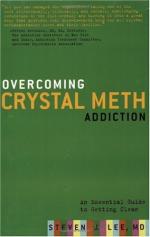|
This section contains 726 words (approx. 3 pages at 300 words per page) |

|
Methampheta-mine (also called METHEDRINE) is a potent PSYCHOMOTOR STIMULANT with a chemical structure similar to AMPHETAMINE. Methamphetamine's stimulant effects on the central nervous system are more pronounced than those of amphetamine, while its peripheral effects (e.g., cardiovascular and gastrointestinal) are less marked. Like amphetamine, it causes increased activity, increased talkativeness, more energy and less fatigue, decreased food in-take, and a general sense of well-being. Injecting the drug intravenously results in the production of a "rush," described by some as the best part of the drug effect. Methamphetamine is more soluble than DEXTROAMPHETAMINE, and, when available, of this group is generally the illicit user's drug of choice for intravenous injection—although dextroamphetamine dissolves sufficiently to permit intravenous use.
Japan was the first nation to experience a major epidemic of methamphetamine use. Immediately following World War II, large quantities of meth-amphetamine, which had been produced to keep combat troops...
|
This section contains 726 words (approx. 3 pages at 300 words per page) |

|


